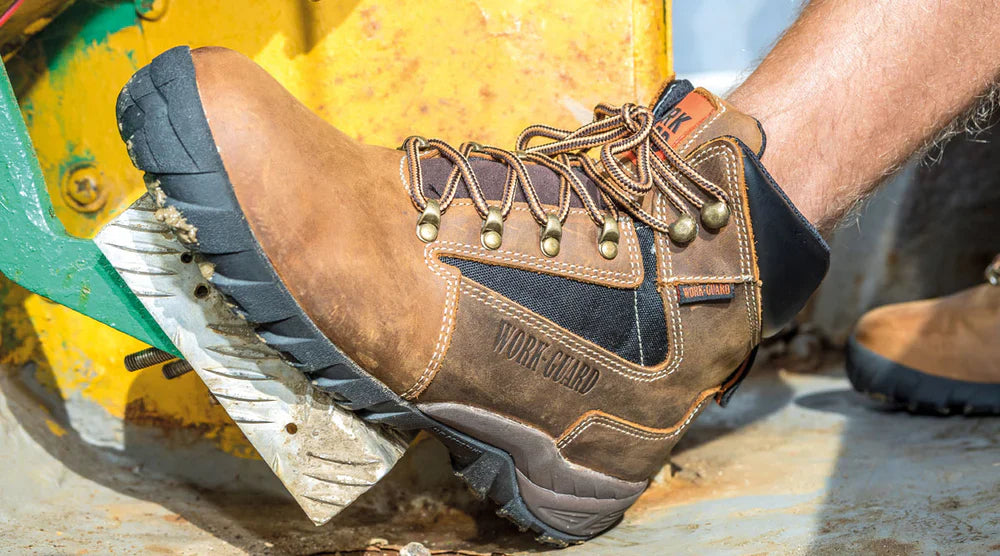Your Cart is Empty
📞 01246 268649 🚚 FREE DELIVERY
Menu

📞 01246 268649 🚚 FREE DELIVERY
Clothing
How to Ensure Your Safety Boots Are Compliant in the UK
June 24, 2025

How to Ensure Your Safety Boots Are Compliant in the UK
When it comes to workplace safety, your footwear is one of the most critical pieces of equipment. Safety boots are designed to protect your feet from hazards such as falling objects, sharp materials, and slippery surfaces. However, not all safety boots are created equal, and in the UK, there are specific standards they must meet to ensure compliance. Here's a guide to help you determine if your safety boots are up to standard.
1. Look for CE Marking
In the UK, safety boots must carry a CE marking to indicate they meet the minimum legal requirements for health, safety, and environmental protection. This marking shows that the boots comply with the Personal Protective Equipment (PPE) Regulation (EU) 2016/425, which is still applicable in the UK post-Brexit.
The CE marking is usually found on the label inside the boot or on the packaging. If the boots lack this marking, they are not compliant and should not be used in a professional setting.
2. Check for EN ISO 20345 Certification
The EN ISO 20345:2011 standard is the benchmark for safety footwear in the UK. This standard ensures that the boots provide adequate protection against workplace hazards. Key features of EN ISO 20345-compliant boots include:
- 200 Joules Toe Protection: The boots must have a reinforced toe cap that can withstand an impact of 200 joules.
- Slip Resistance: The soles should provide adequate grip on various surfaces.
- Anti-Static Properties: To prevent static electricity build-up in certain environments.
- Penetration Resistance: Some boots include midsoles to protect against sharp objects like nails.
- Heat and Cold Resistance: Depending on the work environment, boots may need to withstand extreme temperatures.
Look for the EN ISO 20345 marking on the label or product description. It may also include additional codes (e.g., S1, S2, S3) that indicate specific features.
3. Understand the Safety Ratings
Safety boots often come with additional ratings that describe their specific protective features. Here’s a quick breakdown of the most common ones:
- SB: Basic safety features, including toe protection.
- S1: Adds anti-static properties, energy absorption in the heel, and a closed back.
- S2: Includes all S1 features plus water resistance.
- S3: Adds penetration resistance and cleated soles for better grip.
- SRC: Indicates the highest level of slip resistance.
Choose the rating that matches the hazards in your workplace. For example, construction workers often require S3-rated boots, while warehouse staff may only need S1-rated footwear.
4. Verify the Manufacturer
Always purchase safety boots from reputable manufacturers or suppliers. Trusted brands are more likely to adhere to UK safety standards and provide accurate certification. Avoid counterfeit or unbranded products, as they may not offer the protection you need.
5. Inspect the Boots for Quality
Even if the boots are certified, it’s essential to inspect them for quality. Look for:
- Durable Materials: High-quality leather or synthetic materials that can withstand wear and tear.
- Secure Stitching: Ensure there are no loose threads or weak seams.
- Comfort and Fit: Ill-fitting boots can cause discomfort and reduce safety. Always try them on and ensure they fit snugly without pinching.
6. Consult Your Employer or Safety Officer
If you’re unsure about the compliance of your safety boots, consult your employer or workplace safety officer. They are responsible for ensuring that all PPE, including footwear, meets the required standards. They may also provide guidance on the specific type of boots needed for your role.
7. Keep Documentation
When purchasing safety boots, retain any documentation, such as the user manual, certification details, or receipts. These can serve as proof of compliance if needed.
Conclusion
Ensuring your safety boots are compliant in the UK is not just about meeting legal requirements—it’s about protecting yourself from potential hazards. By checking for CE marking, EN ISO 20345 certification, and understanding safety ratings, you can confidently choose boots that meet the necessary standards. Remember, investing in the right safety footwear is an investment in your well-being.
Stay safe, and step confidently into your workday!
